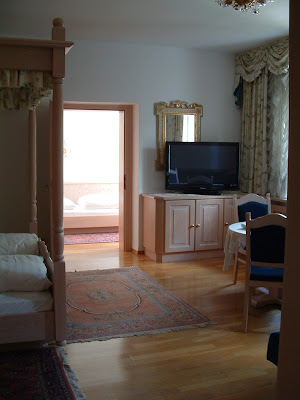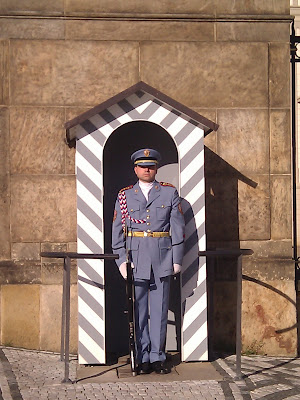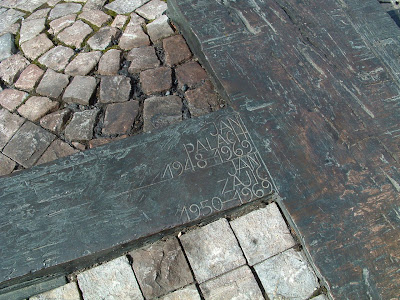Our train ride from Prague back into Germany took us through the area of the Czech Republic historically known as Bohemia. The train was very slow, so we had ample time to admire the scenery.
By contrast, the train from Nuremberg (just across the border) to Munich was very fast.
Those efficient Germans...
We arrived late in Munich and wanted to leave early the next morning for the Alps, so about all we saw of Munich was the inside of a Burger King.
We picked up our rental car the next morning and headed out of town on the "autobahn". There's no speed limit so we didn't know if we would find cars zipping past us if we were toddling along at 70 mph. Our fears turned out to be unfounded -- it felt like a normal freeway in the USA. And it was nice to be driving on the right side of the road again.
Driving through the south German region of Bavaria was a pleasant drive through rolling green hills and tidy villages, with the Alps off in the distance. Every village seemed to have a church with the distinctive onion-dome shape we saw throughout the region.
We crossed the border into Austria and drove west towards Innsbruck, down a valley with the Alps looming high above us on either side. Snow was visible at the very highest elevations.
We arrived at our destination: the small town of Hall, in the region of Austria known as "Tyrol".
We had lunch and then wandered through the small streets and alleyways of Hall.
Many of the shops and homes had flower boxes outside the windows.
We were surprised to come upon a guitar store in this small town. They made custom guitars. Of course Kevin had to try one out.
We stayed at the "Maria Theresa Garten Hotel", a little hotel on the outskirts of Hall, with views looking up to the mountains several miles away.
The neighborhood around our hotel was peaceful and quiet. A small church was right next door.
Since this was the last night of our vacation, we splurged a little and got a larger suite. Laura was thrilled to have her own room.
The hotel included a small "petting" zoo on the grounds. We didn't try to pet the monkey.
That afternoon we drove up into the mountains to try and get a closer look at the Alps.
We turned off onto a narrow gravel road that wound steeply up. We saw only an occasional car and a few brave bicyclists.
At the end of the road we parked and continued on foot up the trail.
Meadows and wildflowers were interspersed with pine trees.
The trail ended at the little community of Walderalm, consisting of a dairy farm and a few houses.
The cows had bells on, and we could hear them clanking off in the distance. Aside from this the only other sounds were the breeze and the occasional voices drifting over from the farm.
We felt like we were in heaven! Except for Laura, who by this time had finally caught our cold --
but she was still a trooper, hiking without complaining.
Back at our hotel, we celebrated our day and our trip with a bottle of wine and dinner, as we watched the peaks in the setting sun.
The next morning we drove over the Alps and took another road back. On our way we stopped at the famous Neuschwanstein castle in Germany near the border of Austria. This was quite touristy and crowded, so we were content to admire it from a distance, especially since we had to get back to Munich to catch our plane to London and then (the next day) the USA.
We have had the trip of a lifetime, but now it's time to say "goodbye"!


















































